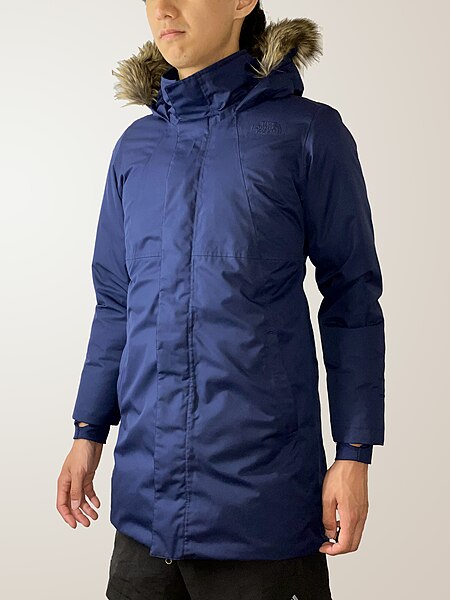A parka and anorak is a type of coat with a hood, often lined with fur or faux fur. These two kinds of garments are staple of Inuit clothing, traditionally made from caribou or seal skin, for hunting and kayaking in the frigid Arctic. Some Inuit anoraks require regular coating with fish oil to retain their water resistance. Parkas are typically longer, often extending to the thighs or knees. Anoraks are usually shorter than parkas, often hip-length, and are traditionally a pull-over jacket.
A modern down parka with faux-fur trim on the hood
A fawn-brown and grey waist-length fur cape, with long sleeves and a hood. Sealskin woman's parka discovered at Qilakitsoq in 1972, dated to c. 1475.
A traditional Inuit anorak made of gutskin.
An Inuit family wearing traditional Caribou parkas.
A coat is typically an outer garment for the upper body, worn by any gender for warmth or fashion. Coats typically have long sleeves and are open down the front, and closing by means of buttons, zippers, hook-and-loop fasteners, toggles, a belt, or a combination of some of these. Other possible features include collars, shoulder straps, and hoods.
Man wearing a coat, painting by Julian Fałat, 1900
Overcoat (left) and topcoat (right) from The Gazette of Fashion, 1872
Justacorps, a seventeenth- and eighteenth-century knee-length coat, fitted to the waist with flared skirts
Frock coat, a kneelength men's coat of the nineteenth century








